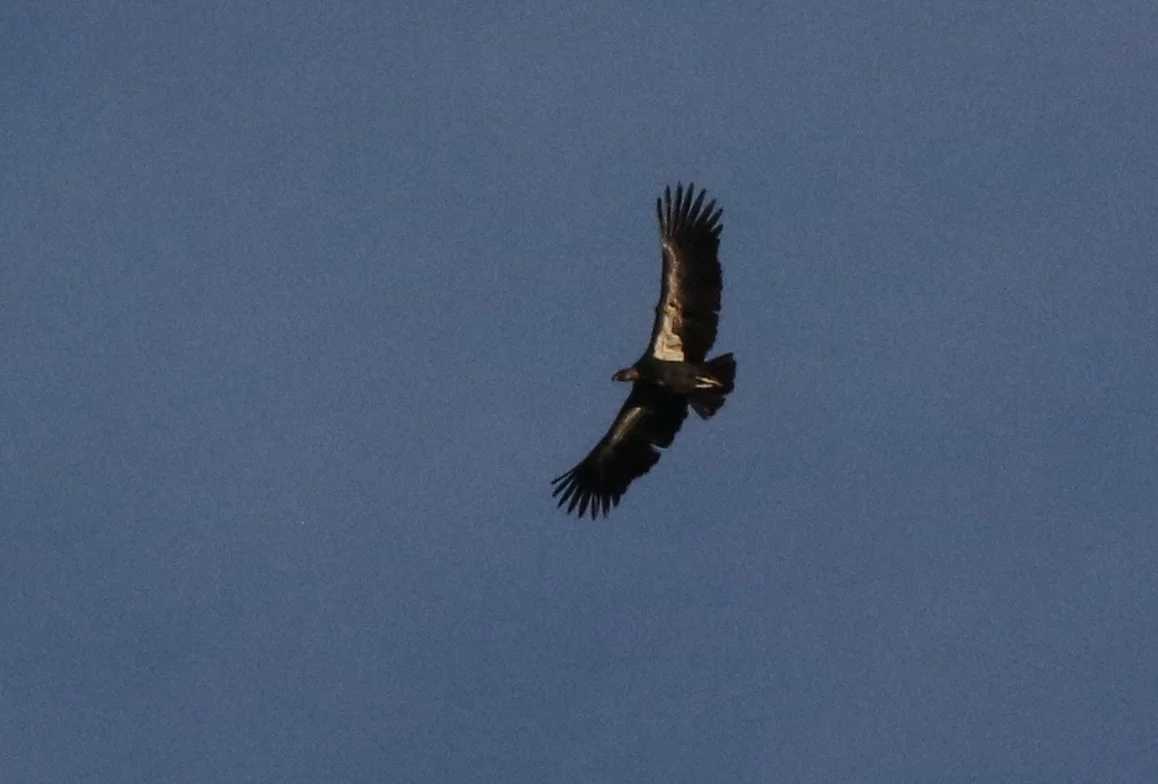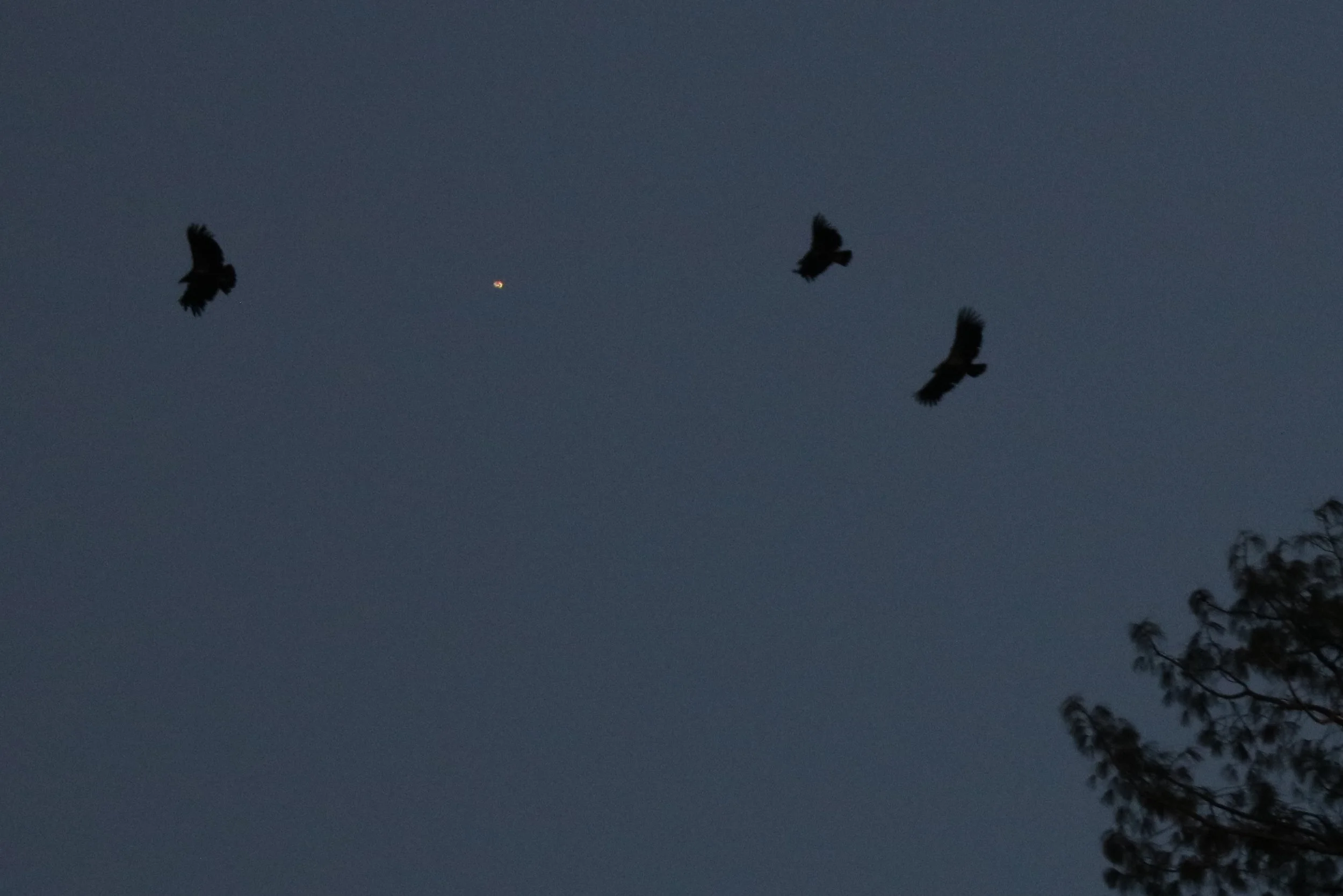Pinnacles National Park, Condor Search
By Sherry Thornburg 3/5/2023
Located east of the Salinas Valley in Central California, the Pinnacles is a landform made from the eroded remnants of an ancient volcano. President Theodore Roosevelt declared Pinnacles a national monument in 1908. Condors came into the parks picture when they became extinct in the wild in the 1980s. Their entire population including those in captivity was also poor, just 27 birds. In 2003, Pinnacles National Park joined other organizations setting up releases. It is now one of the new homes for one of North America’s largest land birds which led President Barack Obama to declare the Pinnacles California’s newest national park in 2013.
Sad History
I recall the sad news back in the 80s of scientists taking away eggs to hatch in breeding programs. It seemed an extreme measure, but here’s the background. Shooting, egg collecting, poisoning by cyanide traps set for coyotes, lead poisoning, power line collisions, and general habitat degradation, took a heavy toll on the birds. They were declared endangered in 1967. The U.S. Fish and Wildlife Service began a captive breeding program in 1983, teaming with the Los Angeles Zoo and the San Diego Wild Animal Park. Wild Condor numbers continued to decline until by 1985 only nine wild birds remained. A controversial decision was made to bring all remaining Condors into captivity. The last wild bird was captured on April 19, 1987. All hope for recovery was now placed on captive breeding programs. The task was formidable to say the least. But today according to the Ventana Wildlife Society count, there are 557 birds both in the wild and in captive programs. Ninety of these birds have been released in Central California.
Coming to California, one of my greatest wishes was the chance to see these birds back in the wild. My first sight of one of these birds was at the CALM Wildlife Rehabilitation Center.
They don’t exactly have a pretty face. Condors are huge, with a wingspan of 9 to 10 feet. They weigh up to 25 pounds. Close cousins to vultures, they are also carrion eaters. Their bald heads allow that lifestyle, keeping fresh food from sticking to their pale pink heads. That was a good view, but not a sighting of a wild Condor I pined for, thus our trips to the coast off Big Sur and the Pinnacles.
Returning to Pinnacles National Park
Upon arriving at the Pinnacles National Park this year, the cool February weather was welcome. Our first trip was two years ago had been in July. All hikes were done in the morning and even then, we nearly melted, but we caught a huge number of birds in the park including my first sight of a wild Condor. One of the magnificent birds gave us a low flyby on the Wilderness Trail.
This year, migration season hadn’t started so the other birds we planned on seeing were limited to birds wintering over or year-round residents which include the Condors.
The first birds we saw were Magpies on the way in, and then a flock of about 30 Turkey on the way to the campgrounds. In this site’s new gallery you can see samples of my trip pictures, including California and American Towhees, California Thrashers, Scrub Jays, Brewer’s blackbirds, Golden-crowned sparrows, Acorn Woodpeckers, and Stellar Jays. Big birds included Vultures, Redtail Hawks, and of course the park’s specialty, California Condors. Other wildlife possibilities include deer, California Quail, and the big spotted squirrels. Flowers weren’t abundant but could still be found on the Bend trail and Condor trail.
Love Songs and Hiking Trails
Even this early, love was in the air. We saw Scrub Jays feeding prospective mates, California Thrashers serenaded us as they called to the ladies, and I caught a pair of Redtails mating.
The Condor trail was our first try on our first morning in the park. The trail connects to other trails, where one of the better viewing areas for Condor is, high up in the pinnacle peaks. The going wasn’t too rough, but once again, one of us, my husband this time, was recovering from injuries. Parts of the trail were too much for him.
The next day, we walked the upper part of the Bend Trail along the creek bed and up through a canyon. A creek flowed down the canyon trail making small waterfalls along the way. The canyon sides gave us the treat of several different lichen patterns on rock. The colors went from vibrant orange to subtle dove gray. Ground covers and white flowers were scattered about. All along the trail, birds chirped up in the canopy. Several bridges get you to both sides of the canyon leading up to a parking area. I saw a big dark bird in the distance along the peaks but there was no way of telling if it was a Condor.
Evening Condor Viewing
The best way to see Condors is to just wait for dusk. The Condors roost in a tall pine on the east ridge above the campgrounds. Our Condor watches start every evening an hour before the sun drops behind the west canyon wall. This year, we had a trailer site closer to the ridge, so had a much better vantage point than the telescope area by the office. On the first night, we were setting up camp and didn’t catch their return. The second night, the Condors came late and then left the tree before dark. This left us wondering if they were branching out.
The last night was a much better. Two birds were already in the tree when we started our watch. For a long time, the only big birds seen on the ridge were the vultures, who circled around in a constant moving kettle. I took some pictures of this. The picture of the three vultures together shows the main way to tell a vulture from a condor. A vulture’s wing feathers shine light in the sun on the trailing end. Condors have dark trailing wing feathers and have white under the upper edge of their wings. While taking these pictures, I thought I saw some birds with white upper wings but couldn’t be sure at the time. Back home, on the computer, it was more apparent. I was ecstatic. Couldn’t see any tags of those birds, so they may have been juveniles that haven’t been tagged yet. In any case, they were floating around the ridge with the vultures like cousins playing.
Later, near dusk, the Condors came one at a time to the tree and offered us an ariel ballet, circling their tree. By now, the light was fading so my pictures are silhouettes. Even so, It was amazing watching them float across the sky as the stars twinkled into view. Then, as the sky darkened, one by one, they broke off, heading back to the tree for the night.
The Last Word
Condors are wonderful massive birds who once roamed as far east as New York and Florida. We are just seeing their recovery now, but maybe in time, they will once again own the skies of North America. I’m hoping my grandson sees them reclaim their lost territories.
See more about these wonderful birds and their recovery here at sfgate.com
My Gallery link for more pictures here.
Happy Birding
Photography
Title Image: Condor Roost
Picture 1: Condor Close-up
Picture 2: First Wild Condor Catch
Picture 3: Pinnacles NP Views
Picture 4: Condor Roosting Tree
Picture 5: Condor in Flight
Picture 6: Condors at Night







